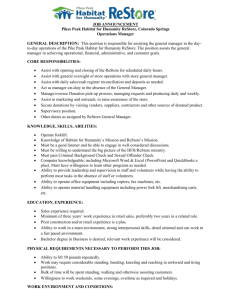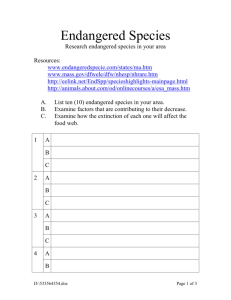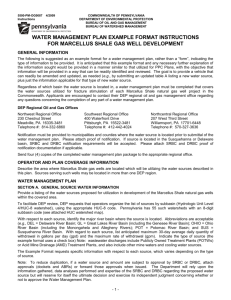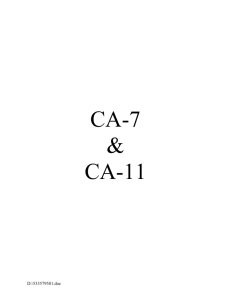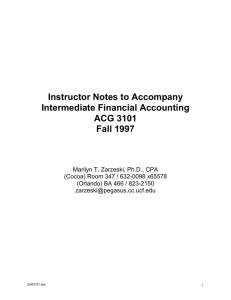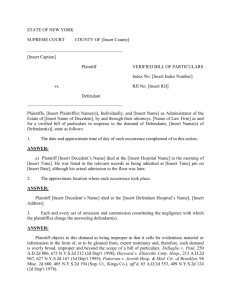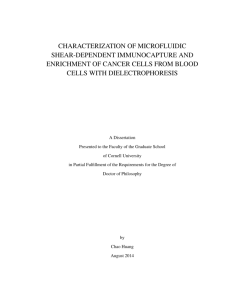Word
advertisement
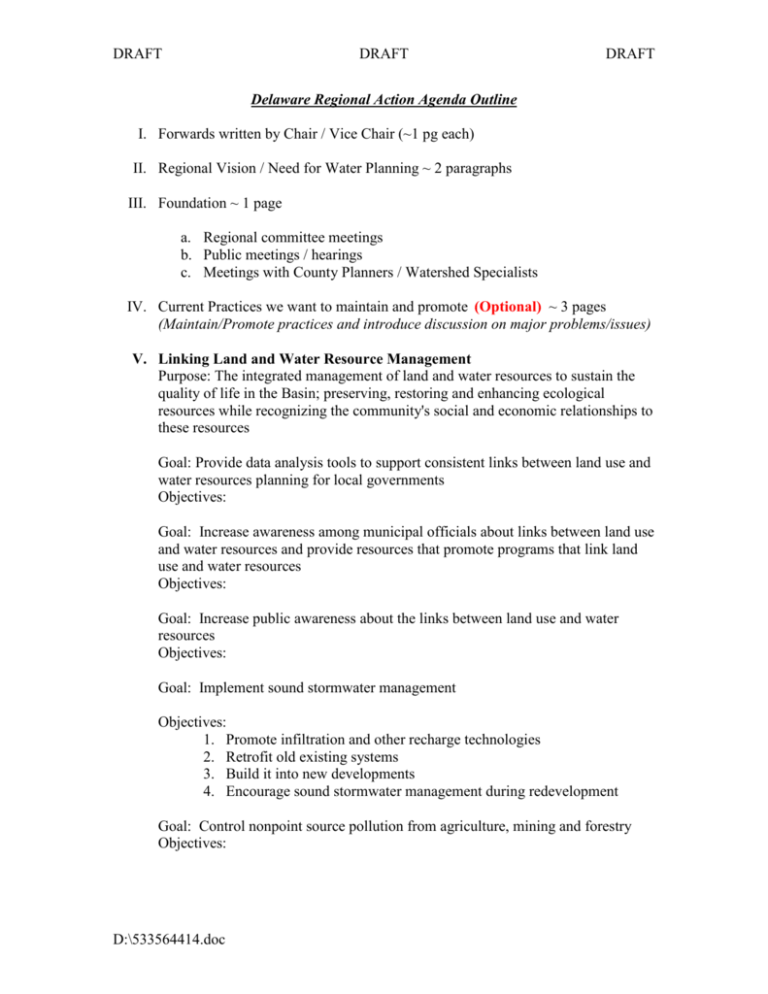
DRAFT DRAFT DRAFT Delaware Regional Action Agenda Outline I. Forwards written by Chair / Vice Chair (~1 pg each) II. Regional Vision / Need for Water Planning ~ 2 paragraphs III. Foundation ~ 1 page a. Regional committee meetings b. Public meetings / hearings c. Meetings with County Planners / Watershed Specialists IV. Current Practices we want to maintain and promote (Optional) ~ 3 pages (Maintain/Promote practices and introduce discussion on major problems/issues) V. Linking Land and Water Resource Management Purpose: The integrated management of land and water resources to sustain the quality of life in the Basin; preserving, restoring and enhancing ecological resources while recognizing the community's social and economic relationships to these resources Goal: Provide data analysis tools to support consistent links between land use and water resources planning for local governments Objectives: Goal: Increase awareness among municipal officials about links between land use and water resources and provide resources that promote programs that link land use and water resources Objectives: Goal: Increase public awareness about the links between land use and water resources Objectives: Goal: Implement sound stormwater management Objectives: 1. Promote infiltration and other recharge technologies 2. Retrofit old existing systems 3. Build it into new developments 4. Encourage sound stormwater management during redevelopment Goal: Control nonpoint source pollution from agriculture, mining and forestry Objectives: D:\533564414.doc DRAFT DRAFT DRAFT Goal: Identify, protect and restore high value water resource areas – wetlands, floodplains, groundwater recharge areas, erodible slopes, headwater streams and associated drainage area, forested areas, and water bodies Objectives: Goal: Reduce point source discharges of toxics and wastewater and promote land application and appropriately scaled wastewater treatment systems Objectives: Goal: Coordinate public infrastructure investments with sound water resource planning Objectives: 1. Integrate transportation plans with water resource and land use plans 2. Address transportation issues such as spills and releases 3. Address economically sound and environmentally viable solutions for water supply and sewage disposal in subdivisions Goal: Discourage development where it may impair water resources and their related natural resources; encourage reuse and infill development where water and wastewater infrastructure exist; encourage design of new development in a way to reduce environmental impact Objectives: Goal: Link sewage facilities planning with water resource planning, strengthen statutory authorities, and provide better training for municipalities Objectives: Goal: Amend the Municipalities Planning Code to allow local governments to address more effectively water resource issues Objectives: Goal: Coordinate with and help define the role of DRBC, DEP, PUC, DCED, PEMA, CCD and PennDOT in water resource planning Objectives: VI. Sustainable Use and Supply Purpose: An adequate and reliable supply of quality water to sustain human and ecological needs based on water budgets. Equitably balance the multiple demands generated by economic development, while preserving and enhancing conditions in watersheds to maintain and achieve ecological integrity Goal: Identify instream flow needs, and protect and restore instream flows Objectives: 1. Take into account needs for flow-dependent recreational activities Goal: Identify, protect and restore ecologically sensitive areas D:\533564414.doc DRAFT DRAFT DRAFT Objectives: Goal: Manage water resources to reduce the impacts of extreme conditions (floods, drought) Objectives: Goal: Provide an adequate supply of potable water for public and private water supplies and suitable water for commercial, industrial, agricultural and power generation needs Objectives: 1. Measure and control water system leakage and loss Goal: Encourage water conservation, recycling and reuse Objectives: Goal: Use and promote sound data gathering, data management, data sharing and consistency Objectives: 1. Recognize and account for all significant water withdrawals Goal: Encourage local/county/regional plans consistent with the State Water Plan Objectives: Goal: Identify the roles of various agencies (e.g. DRBC, DEP, PUC, DCED, PEMA, CCD, PennDOT) in implementing the State Water Plan Objectives: Goal: State infrastructure investments should be consistent with the State Water Plan Objectives: 1. The State Water Plan should identify areas where this consistency will promote sustainable use and supply of water resources VII. Recommendation on Education and Involvement for Stewardship Purpose: DEP should develop a program for education and involvement for stewardship to: Goal: Ensure that principles embodied in the State Water Plan are incorporated in state environmental education curricula and watershed organization education programs in cooperation with County Conservation Districts Objectives: Goal: Promote use of DEP tools and principles of sustainable use and supply among developers, engineers and planners D:\533564414.doc DRAFT DRAFT DRAFT Objectives: Goal: Promote consistency with the State Water Plan in local planning through activities like PSATS courses Objectives: VIII. Waterways Corridor Management Purpose: Waterway corridors that function to support healthy aquatic and riparian ecosystems, preserve natural stream channel stability, protect property and floodplain ecology, minimize flood-induced loss of life, and provide appropriate recreational access. Goal: Identify, protect, conserve and restore healthy and biologically diverse riparian and aquatic ecosystems. Objectives: Goal: Identify, protect and restore floodplains, buffers and wetlands to healthy, natural function which will protect ecosystems, property and life. Objectives: Goal: Enhance appropriate water-based recreation in and along the Delaware River and its tributaries. Objectives: Goal: Secure needed legislation and regulation to accomplish protection and restoration of floodplains, buffers, wetlands and appropriate water-based recreation. Objectives: IX. Conclusion / Additional steps needed to achieve our vision for 2013, and in 2030 ~3 pages D:\533564414.doc

